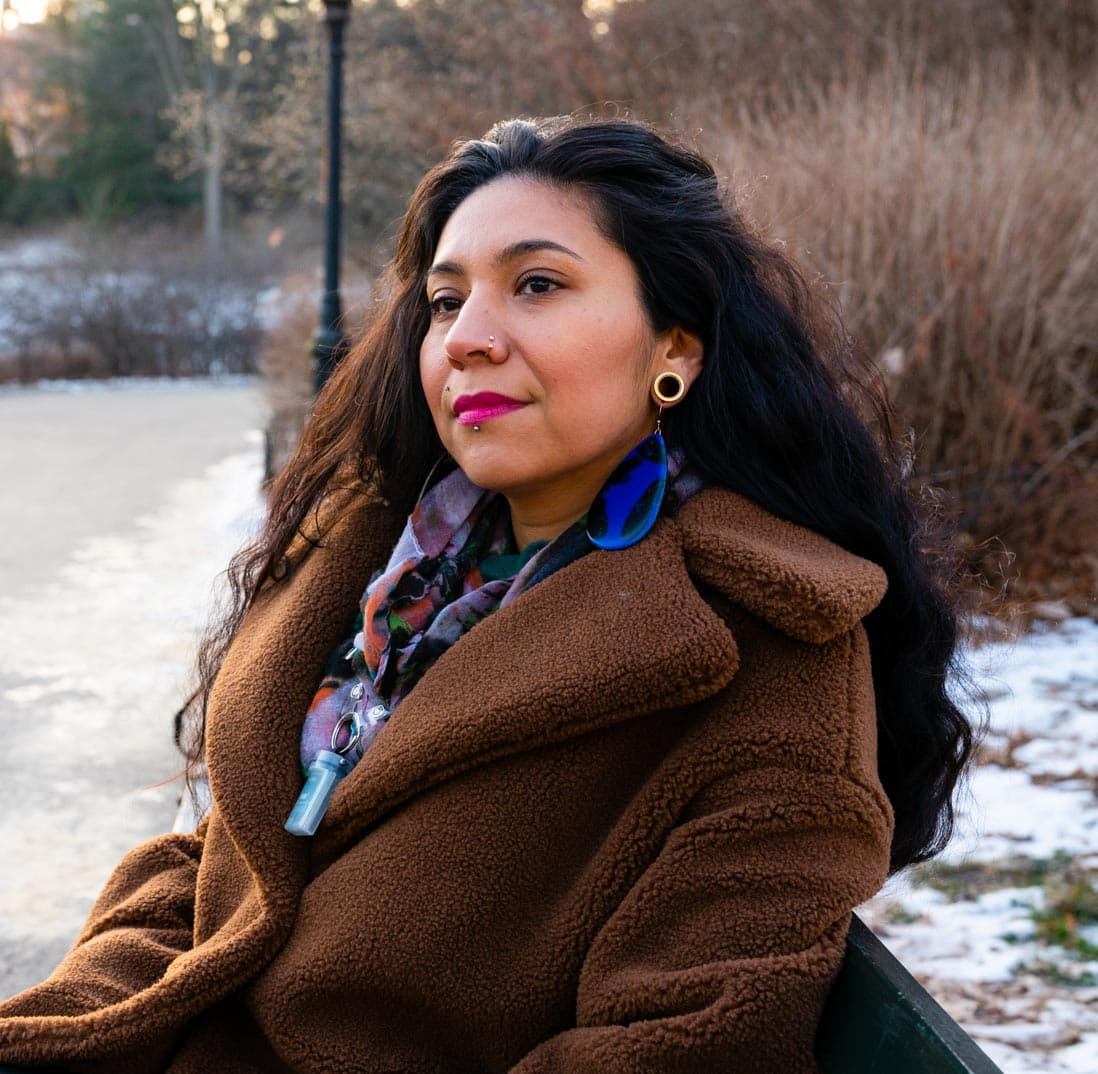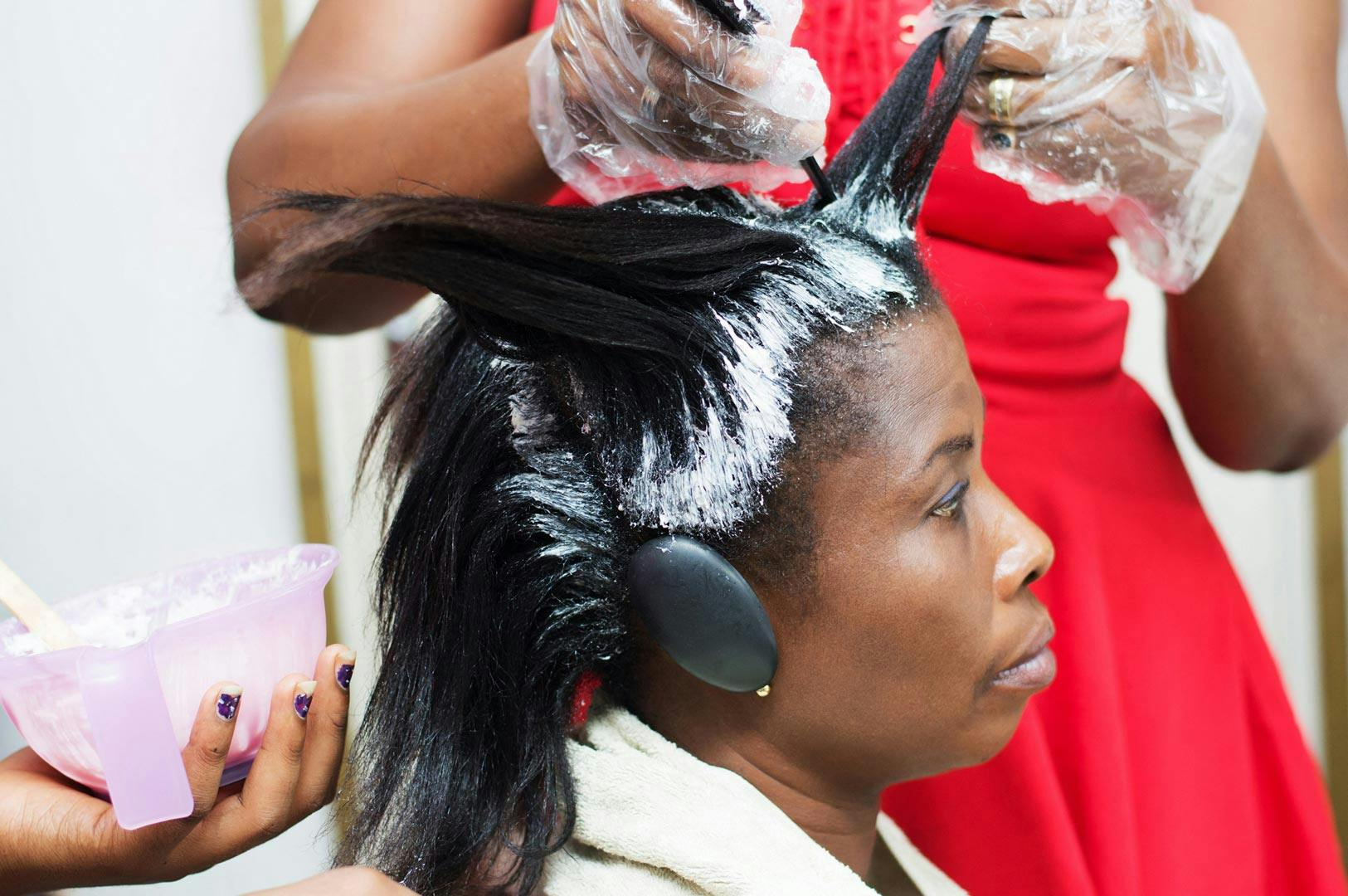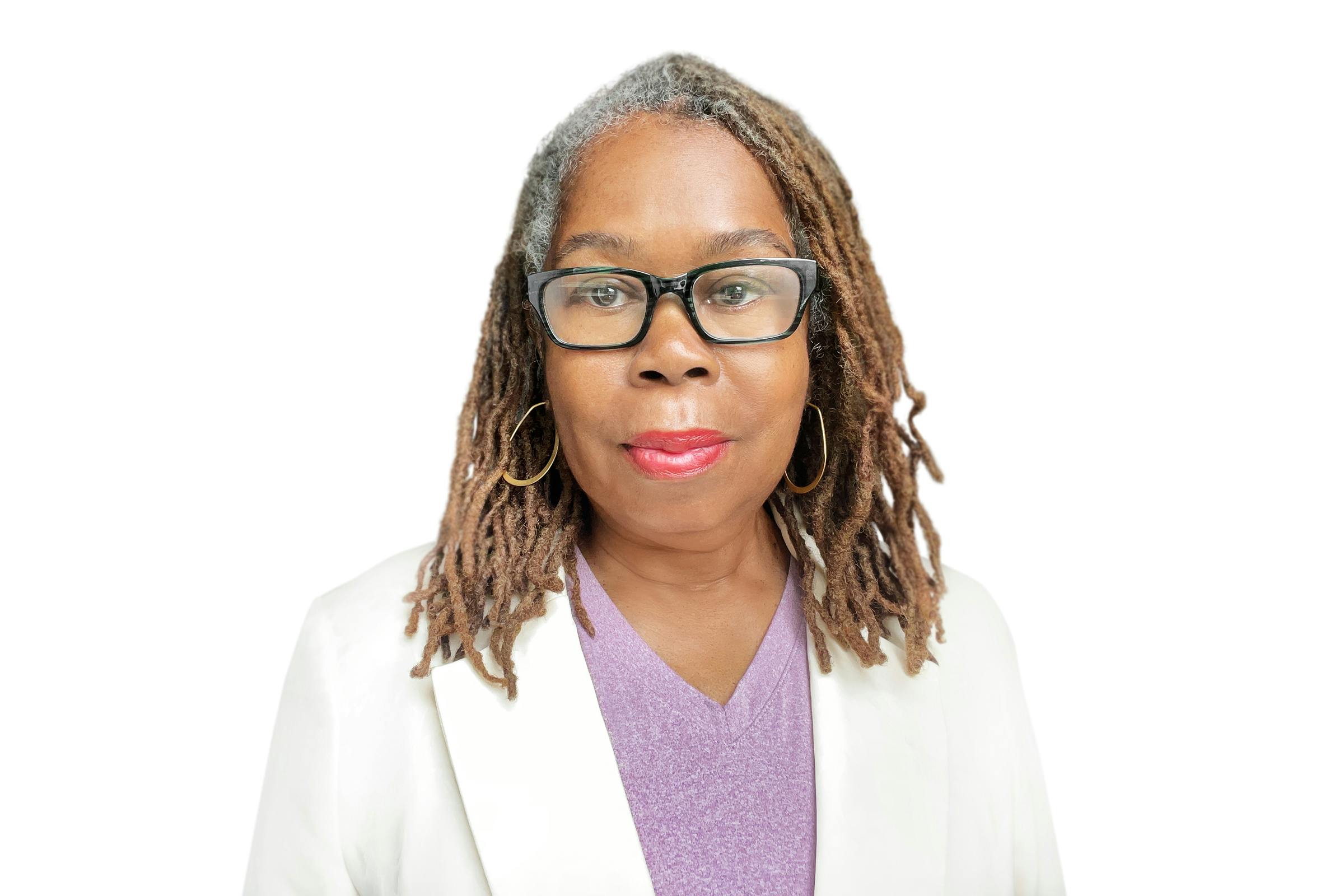The U.S. Food and Drug Administration is considering banning hair straighteners that contain or emit formaldehyde. The products, which have been used by Black women for decades, have been linked to increased rates of cancer, particularly uterine cancer.
For more than a decade, the beauty justice movement has been lobbying policymakers to ban harmful chemicals in beauty products. Advocates are also sounding the alarm on mercury-laden skin lighteners popular among Asian, Hispanic and Black communities. Research shows that these beauty products — that often reinforce Eurocentric beauty standards — contain harmful chemicals linked to the early onset of puberty, kidney damage, cancer and other health issues.
Micaela Martinez co-leads the Beauty Justice Coalition, which helped to develop a package of bills in the U.S. Congress that would heighten safety standards in cosmetics and require the federal government to earmark funds to study the disproportionate impact of toxic beauty products on communities of color.
A former assistant professor at Columbia University Mailman School of Public Health, Martinez is the director of environmental health at WE ACT for Environmental Justice, an international environmental group based in New York City. Over the past decade, her research has focused on environmental impacts on health, among other issues.
The Examination’s consulting editor Susan Richardson chatted with Martinez about cosmetics use in communities of color and why regulation of beauty products matters.
This interview has been edited for clarity and brevity.
The beauty justice movement has been advocating for banning formaldehyde and formaldehyde-releasing ingredients in hair relaxers and other products. How significant is the FDA proposal to ban these ingredients?
The FDA rulemaking proposal is significant because it focuses on hair smoothing and hair straightening products. These products are often marketed to women of color, making this rulemaking, if passed, a big win for beauty justice. It is also important to note that the rulemaking would also ban formaldehyde releasers, which will prevent companies from using a loophole that allows them to add formaldehyde-releasing chemicals to products without listing them on ingredients' labels.
What else would you like the FDA to do?
I would like to see the FDA ban the full set of over 2,000 chemicals that are already banned in cosmetics and personal care products in the European Union. At the very least, I would like to see the FDA ban the chemicals that are proposed to be banned in New York State bill NYS S. 4265. Formaldehyde is just one of many toxic chemicals we are exposed to daily through cosmetics and personal care products. We also need to ban other known carcinogens and endocrine-disrupting chemicals that harm human health.
I would also like to see a fully-funded program and staffing for enforcement of these bans, as well as funding for research into innovative non-toxic alternatives.
What does ‘beauty justice’ mean to you?
Beauty justice is the right for all people to live in a society free of toxic chemical exposure from cosmetics and beauty products, and the right for people of color to live in societies free of racialized beauty norms, and to be intentionally and actively protected against health disparities due to toxic beauty products.

Most people don’t associate harmful chemicals in cosmetics with environmental justice. What’s the link?
There's a lot of confusion about what environmental justice really is. Many environmental justice organizations focus on air pollution and water. Those are things that we care about, but we look at the environment much more holistically. The environment that people live in is physical, biological, chemical, indoor, and outdoor. There's a huge amount of literature on social determinants of health and how our environment shapes our health and well-being.
When it comes to beauty and personal care products, those are exposures that are happening within people's homes. That's why it’s important for us.
We also care about whether children are getting exposed to lead dust from old paint in their homes. People more closely tie [lead exposure] to environmental justice organizations. Well, lead paint exposure in a home, it's a neurotoxin. The exposure is no different from mercury in skin lighteners in terms of the actual effects, and it also happens in the home.
The other reason we care about beauty product work is because of social and structural racism. We have beauty standards that are tied to colonization and white supremacy that shape people's health and well-being. When health and well-being are being determined by people's racial or ethnic background, that's a justice issue. That's why beauty products are absolutely within the realm of environmental justice.
What are some of the most harmful chemicals in cosmetics marketed to women of color?
Two of the most harmful product types are chemical hair straighteners, also known as hair relaxers, and skin lighteners, which are now starting to be rebranded as “glow” serums.
Chemical hair straighteners are notorious for having high levels of formaldehyde in them. Formaldehyde is not only a carcinogen, but it can also cause reproductive health harms.
Skin lighteners tend to have a plethora of toxic chemicals, the most deadly and dangerous toxic chemical being mercury. Mercury, unfortunately, is a very good blocker of melanin production. Companies that make skin lighteners put mercury in their products to make them more effective.
Even skin lighteners that don't contain mercury — and mercury is actually pretty common in skin lighteners — there are corticosteroids, which are hormones, and hydroquinone, which can cause skin irritation and various chronic skin problems.
WE ACT surveyed people in Upper Manhattan and the Bronx to ask them how often they used hair relaxers and skin lighteners. The results were published earlier this year in the Environmental Justice journal. How did this research help you understand how these products are used and their racial implications?
One thing that this survey did was give us an idea of the prevalence of use. What fraction of women and femme-identifying people are using these products? We can see the products in stores, but they might just be sitting on the shelves, right? We had quite a large sample size: it was close to 300 individuals. Something like 25% of respondents said they had used skin lighteners at some point in their life.
We also asked people why they were motivated to use these products. The most common motivating factor was that they thought using the products made other people think that they were more beautiful or respectable, not that they thought using those products made them more beautiful or respectable. That’s really important from an advocacy standpoint. When we talk about these products, we have to understand the root motivation for their use.
Skin lighteners containing mercury are banned in the U.S. but are still available domestically. How are they getting into communities?
There are two major ways. One, they’re actually getting imported with mercury in them. The labels don’t say that they contain mercury, and because there’s no testing in the U.S., the products just come into the country. We have examples from different countries. Pakistan tends to be a major place that manufactures skin lighteners found in the U.S. that are later tested for mercury. The other way that mercury-containing skin lighteners become present in the U.S. is when mercury is put in lighteners that are already here to try to make them more effective.
You will have harm to public health for generations and generations if you use that very outdated way of doing things like we currently do in the U.S.
Micaela Martinez
Regulating skin lighteners is a global issue. That's why it's challenging. It requires global coordination — not only in terms of regulation but also cultural awareness about how the use of lighteners plays out in different cultures. If you talk to the New York City Department of Health, they're going to tell you the group where they most frequently see mercury poisoning is going to be Dominican women. In New York City, skin lightening is also very common in the African diaspora and among Asian women, whether they identify as Asian American and have been in the U.S. for many generations or are recent immigrants. Skin lightener use in the U.S. varies from region to region.
Aside from the bills you’re supporting in the U.S. Congress, what other regulations would you like to see?
One of the most important things in the United States is getting regulators to start working based on the precautionary principle. If we were to rely on chemical bans one by one, we would never get anywhere. You will have harm to public health for generations and generations if you use that very outdated way of doing things like we currently do in the U.S.
The precautionary principle is the idea that you look at general classes and functions of chemicals and say, “OK, we have data on some subset of these chemicals and we see that from animal studies and maybe even more limited human studies that this is likely to impact the body in this particular way. Therefore, based on the research that's been done on a subset of chemicals, we're going to ban this entire class because we have sufficient reason to think that this whole group of chemicals would impact the body in that way.’’
Subscribe to our newsletter
Global health reporting, straight to your inbox
That's more what the European Union has done. Having a precautionary principle where you're putting public health at the forefront and capitalism in the back is important.
The other thing we really need to see in the United States is cross-agency work. We’ve been calling for the Food and Drug Administration, the Environmental Protection Agency, Health and Human Services, and the National Institutes of Health, which falls under Health and Human Services, to coordinate their work. The National Institutes of Health and other institutions fund a lot of the research. They are spending millions upon millions of dollars to generate all of this information about impacts on human health. Why is there no cross-agency coordination to say: “Now we have sufficient data. Now you should take this action”?

